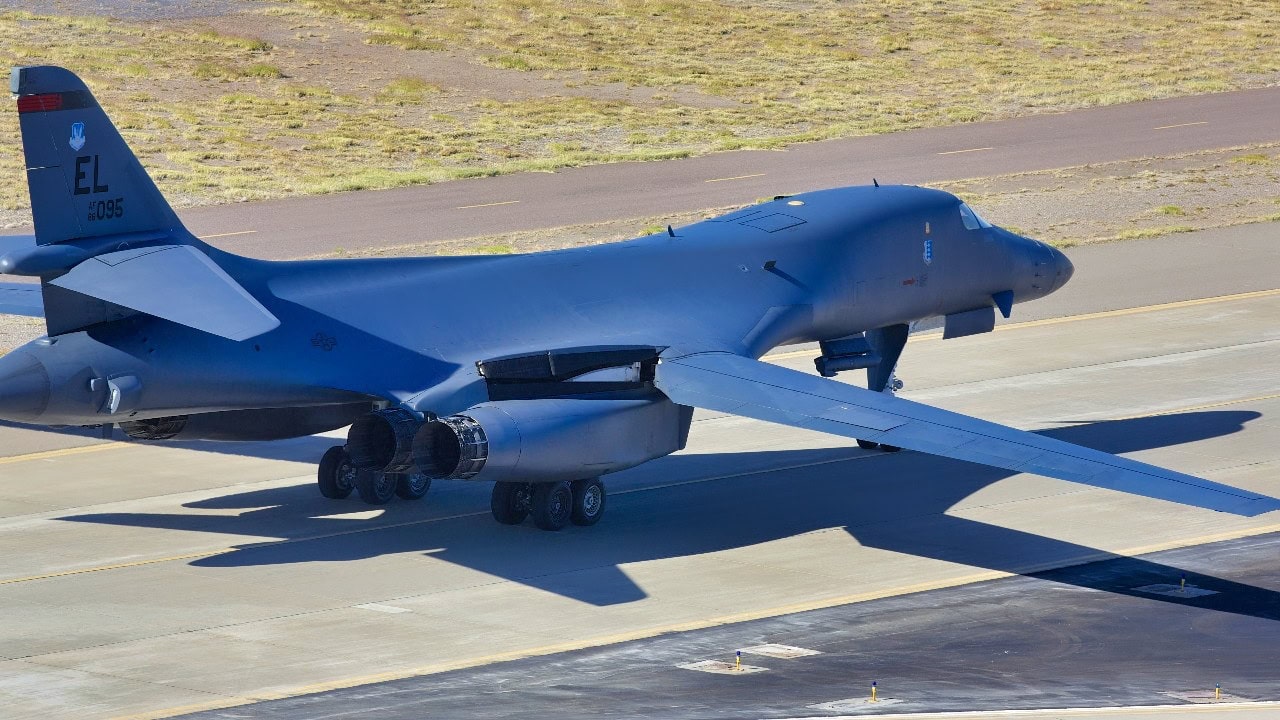Summary and Key Points: The U.S. Air Force has the capability to strike Iran’s nuclear facilities, notably using stealth bombers armed with bunker-busting GBU-57 bombs.
-However, effectively destroying Iran’s deeply buried and dispersed nuclear sites, such as Fordow and Natanz, remains challenging.
-Even powerful munitions may struggle against these fortified targets.
-While recent deployments of B-2 bombers to Diego Garcia signal U.S. preparedness, military action risks significant regional retaliation, potentially impacting global shipping and economic stability.
-Moreover, Iran could rebuild quickly, especially with support from allies like Russia. Thus, a military solution alone might prove insufficient without robust diplomatic and economic pressure.
Could the U.S. Air Force Destroy Iran’s Nuclear Program?
The U.S. Air Force possesses advanced precision-strike capabilities and could target Iran’s nuclear facilities and related infrastructure.
But doing so effectively—that is, successfully dismantling the country’s nuclear program through kinetic strikes—could prove to be highly challenging.
A successful strike on Iran’s nuclear infrastructure would rely heavily on exact intelligence about the locations of the relevant assets. Much of this infrastructure is heavily fortified in underground facilities designed to resist strikes.
Some of the Components of Iran’s Nuclear Infrastructure
Iran’s primary site for uranium enrichment is Natanz, in the center of the country, where most of its enrichment equipment is located. While much of the facility is relatively open, Iran has taken steps to disperse the site’s assets and prevent a knock-out blow.
Iran’s underground enrichment facilities at Fordow, a complex deep underground the mountains, are specifically designed to resist aerial bombardment, even from deep-penetrating bunker-buster munitions. Fordow’s resiliency to strikes is thought to be formidable.
Iran’s Arack reactor, where heavy water intended for plutonium production is found, would be difficult to defend against an aerial attack. However, the reactor’s design could lend itself to rapid reconfiguration, and a strike may delay rather than put the kibosh on plutonium production.
Other nodes in Iran’s nuclear infrastructure in Tehran, Isfahan, and at other locations are relevant to Iran’s nuclear-material processing, nuclear research, and nuclear technical development. Disruption of these facilities would necessitate a wide range of air strikes against targets potentially in densely populated civilian areas, increasing the risk of collateral damage.
The Weaponry Question
The best tool the U.S. Air Force has to reliably take out protected sites, like Fordow, that are deep underground, is its bunker-buster munitions, some of which are the largest, most capable penetration munitions in the world. The most effective munition for such a target might be the GBU-57 Massive Ordnance Penetrator (MOP), a 27,000-pound warhead designed to penetrate many dozens of feet of earth and concrete before detonating its massive warhead. (The GBU-57’s exact performance is not publicly known.)
Multiple strikes with GBU-57 Massive Ordnance Penetrators would likely be a precondition to writing off individual sites as non-functional. But some experts suggest even the GBU-57 is insufficient to take out Iran’s most protected locations.
Diego Garcia
Recent reporting indicates that the Air Force is massing a significant portion of its B-2 Spirit stealth bomber fleet at Diego Garcia, a British military island installation in the Indian Ocean. At least four, and possible seven B-2s, along with dozens of aerial refueling aircraft and cargo transports, are either en route or are already on the island—a move that does not bode well for Iran.
Following Israeli airstrikes in Iran last year that seemingly decimated the country’s air defenses—including reportedly destroying all of Iran’s Russian-supplied S-300 air defense batteries—there is a unique window of opportunity.
With Iranian proxies and buffer groups Hamas, Hezbollah, and the Assad family either on the run, in exile, or otherwise very battered, Iran is arguably more vulnerable now than at any time in several decades.
B-2s and the Bomb
Each B-2 Spirit stealth bomber can deliver a pair of GBU-57s. With the presence of the bombers at Diego Garcia, the math indicates an initial salvo of eight to 14 GBU-57s could be involved in a campaign to hit Iran’s nuclear infrastructure.
With the prospect of continuous sorties, and with additional GBU-57 MOP ammunition shifted to Diego Garcia, those numbers could increase to several dozen.
The Wider Region
Irrespective of how effective initial strikes against Iran’s nuclear infrastructure might be, Tehran’s ability to retaliate would remain significant. Such retaliation would likely be carried out by the Iran-backed Houthis against American allies—particularly Israel—or against shipping in the Red Sea. The effect on global shipping and the world economy could be substantial.
The U.S. Air Force does have significant aerial assets and weaponry to execute a widespread strike campaign against Iran’s nuclear infrastructure throughout the country. However, regardless of the effectiveness of such a campaign, Iran’s ability to resume uranium enrichment afterward would not be zero. Given the increasingly friendly relationship between Tehran and Moscow, the potential for Russia coming to Iran’s assistance in expediting a nuclear program could blunt the effectiveness of an American strike in the long term.
Additionally, the risks of collateral damage, and the effect on long-term regional stability, stack heavily against a purely military solution to ending Iran’s pursuit of nuclear weapons. For an effective bottling up of the Iranian nuclear program, an effective sanctions regime, and, in particular, the throttling of Iran’s energy exports, would be necessary.
About the Author: Caleb Larson
Caleb Larson is an American multiformat journalist based in Berlin, Germany. His work covers the intersection of conflict and society, focusing on American foreign policy and European security. He has reported from Germany, Russia, and the United States. Most recently, he covered the war in Ukraine, reporting extensively on the war’s shifting battle lines from Donbas and writing on the war’s civilian and humanitarian toll. Previously, he worked as a Defense Reporter for POLITICO Europe. You can follow his latest work on X.

